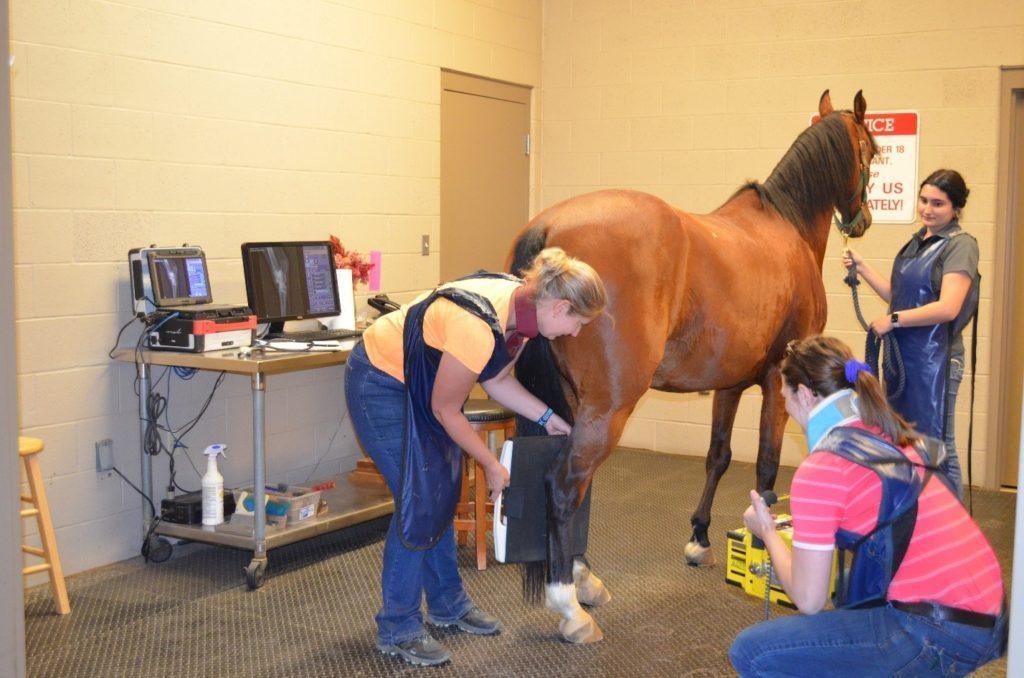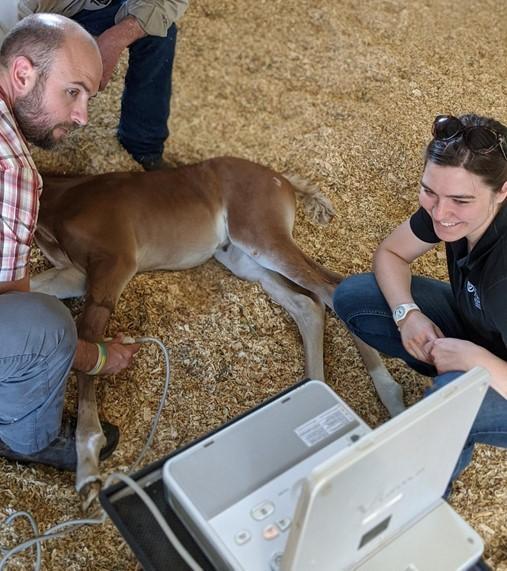As part of a lameness exam, our veterinarians will determine where the horse is lame and how severe. During a typical lameness evaluation, the horse is observed in motion whether it be walk/trot in hand, on the lunge line, or undersaddle. Flexion tests of the limb may be performed to further identify the lameness. If a lameness is noted, diagnostic nerve blocks or imagery may be indicated to come up with a treatment plan.
Diagnostic nerve blocks may be used to pinpoint origins of lameness and this is done by injecting a local anesthetic under the skin by specific nerves. In doing so, the doctor can isolate which part of the leg is causing pain. Once the lameness is isolated, diagnostic imaging such as X-ray, ultrasound, or MRI may be indicated to further diagnose the issue.

Lameness Locator is a computed gait analysis program developed by Equinosis and the University of Missouri. Sensors are placed on the horse and information is transmitted to a computer to analyze the horse at the trot in hand, lunging at the trot, or undersaddle. Once the data is collected, it identifies the lame limb or limbs. This tool is especially helpful in horses that have vague or hard to pinpoint lameness issues. To learn more about Lameness Locator, visit their website http://equinosis.com/
Digital radiography is an important tool in diagnosing lameness. Portable digital radiography units consist of a preliminary storage and viewing unit, and a digital plate that captures the image. This allows the veterinarian to see high quality x-ray images immediately on a computer screen and manipulate the image, by magnifying it and adjusting the contrast, to locate minute problems, sometimes in the development stage, allowing treatment to begin quickly. The system also reduces the number of retakes as the radiograph quality can be assessed at the time of the examination. Diagnosis may be made in the field, or radiographs can be stored and viewed at the clinic for further analysis.
The portable unit also allows radiography of areas of the body such as the thorax and cervical spine, which were previously impractical to radiograph in the field.


Ultrasound imaging, a tool that was partially developed for universal use by Dr. Ronald Genovese, allows doctors to assess soft tissue in great detail and monitor healing. Ultrasound equipment can be used at the clinic or in the field to assist in the diagnosis of numerous joint, tendon and ligament injuries, musculoskeletal injuries, as well as conditions including pneumonia, abdominal pain, umbilical infection and monitor pregnancy. Information about moving structures such as the heart and intestinal tract can also be obtained through ultrasound and Color Flow Doppler.
Monday – Friday
8:30am – 5:00pm
Saturday-Sunday
Emergency Service Open
